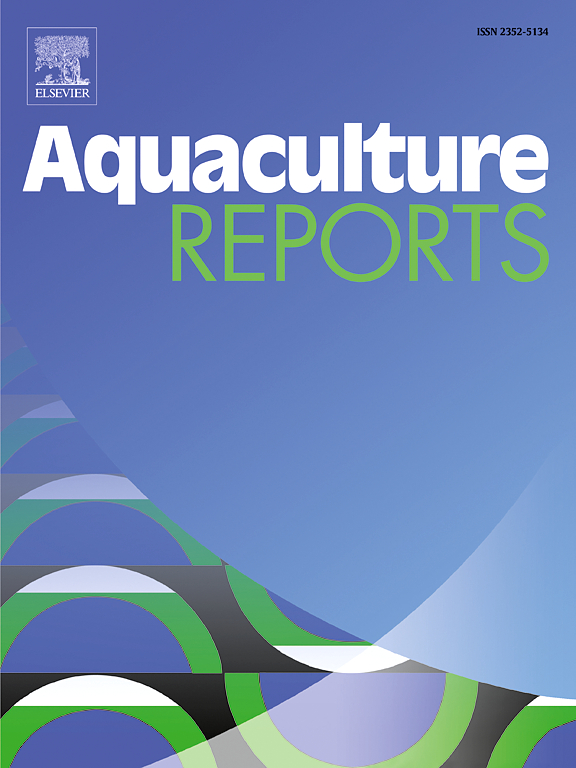Differential expressed genes (DEGs) and differential alternative splicing genes (DASs) revealed the common pathologic mechanism of three bacterial pathogens to American eels (Anguilla rostrata)
IF 3.2
2区 农林科学
Q1 FISHERIES
引用次数: 0
Abstract
Edwardsiella anguillarum, Vibrio harveyi and Vibrio vulnificus are three common bacterial pathogens in cultivated American eels (Anguilla rostrata), but the common pathologic mechanisms of these infections to eels are not well understood. In this study, we administered the LD50 dose of E. anguillarum (Ea), V. harveyi (Vh) and V. vulnificus (Vv) to three groups of American eels. Subsequently, the pathological changes and RNA-seq analysis of the spleen were explored after 36 and 60 hours (h) of the infection. The results revealed two common pathological alterations of an increase in central melanin engulfing cells and the infiltration of red blood cells in the spleen after the infection of three bacterial pathogens. Compared to the Con group, result of the RNA-seq of six infected groups showed 2247 common differentially expressed genes (DEGs). Gene Ontology (GO) enrichment analysis identified 23 common terms and Kyoto Encyclopedia of Genes and Genomes (KEGG) pathway analysis highlighted 18 common pathways. Furthermore, the analysis of differential alternative splicing genes (DASs) identified 332 common DASs across the six comparisons. These DASs predominantly enriched in five GO terms associated with “RNA processing” and “binding”, and they were also significantly associated with two KEGG pathways of “Spliceosome” and “NOD-like receptor signaling pathway”. Finally, the analysis of protein-protein interactions identified 72 out of 332 common DASs. This analysis also indicated that 7 DAS-encoded proteins in the American eel may play an essential role in the immune response against the three bacterial pathogens. Together, we report for the first time a comparative analysis of pathogenicity and RNA sequencing for E. anguillarum, V. harveyi and V. vulnificus in the American eel. This study provides new insights into the common pathological mechanisms of three bacterial pathogens, as revealed by histopathology, DEGs, and DASs.
求助全文
约1分钟内获得全文
求助全文
来源期刊

Aquaculture Reports
Agricultural and Biological Sciences-Animal Science and Zoology
CiteScore
5.90
自引率
8.10%
发文量
469
审稿时长
77 days
期刊介绍:
Aquaculture Reports will publish original research papers and reviews documenting outstanding science with a regional context and focus, answering the need for high quality information on novel species, systems and regions in emerging areas of aquaculture research and development, such as integrated multi-trophic aquaculture, urban aquaculture, ornamental, unfed aquaculture, offshore aquaculture and others. Papers having industry research as priority and encompassing product development research or current industry practice are encouraged.
 求助内容:
求助内容: 应助结果提醒方式:
应助结果提醒方式:


